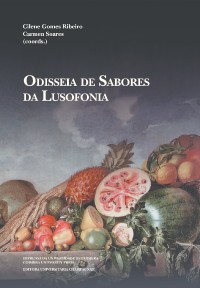Please use this identifier to cite or link to this item:
https://hdl.handle.net/10316.2/38430| Title: | Arrufos e assoprinhos: receitas e os espaços do feminino na região dos Campos Gerais: 1900–1950 | Other Titles: | “Arrufos and Assoprinhos”: recipes and feminine spaces in the region of Campos Gerais: 1900–1950 | Authors: | Pilla, Maria Cecília Barreto Amorim | Keywords: | Notebooks of recipes;Alimentation patrimony;Spaces of feminine;Campeira society;Alimentation culture;cadernos de receitas;patrimônio alimentar;espaços do feminino;sociedade campeira;cultura alimentar | Issue Date: | 2015 | Publisher: | Imprensa da Universidade de Coimbra | Journal: | http://hdl.handle.net/10316.2/38423 | Abstract: | The notebooks of recipes from the 19th century until large part of the
20th century have been elaborated exclusively by women, this notebooks circulated
in the female space. Considering that everything around transcribe, store, organize
cookery notebooks, can reveal the wealth of flavors, tastes, as well as the legacy of
refinement, of sensations, of emotional ties, the recorded memories in the form
of recipes, is that the alimentation may show a constitutive element of affinities
between a group, in the case of this study, the group of women of a family. In this
sense a question arises: how the titles of the recipes indicate the space of the house,
kitchen, pantry, dining room, as essentially feminine spaces in pontagrossense society
the first half of the twentieth century? In search of answers, we built up a research,
which is in initial phase of analysis of the sources, precisely the available recipe
notebooks of a private collection that belonged to a family group from the region
of Ponta Grossa, of the first half of the 20th century. Os cadernos de receitas, ao longo do século XIX até grande parte do XX, foram elaborados quase que exclusivamente por mulheres; eles circularam entre os espaços privados do feminino. Considerando-se que tudo o que cerca o transcrever, guardar, organizar os cadernos de culinária pode revelar o patrimônio dos sabores, dos gostos, assim como o legado dos requintes, das sensações, dos laços afetivos, das lembranças registradas em forma de receitas, a alimentação pode se mostrar um elemento constitutivo das afinidades entre um grupo, no caso desse estudo, o grupo das mulheres de uma família. Nesse sentido, uma questão se impõe: em que medida os títulos das receitas sinalizam o espaço da casa, cozinha, copa, sala de jantar, despensa, como espaços essencialmente femininos na sociedade pontagrossense da primeira metade do século XX? Em busca de respostas, construiu-se uma pesquisa, que se apresenta em sua fase inicial de análise das fontes, justamente de cadernos de receitas disponíveis em acervo pessoal que pertenceram a um grupo familiar da região de Ponta Grossa da primeira metade do século XX. |
URI: | https://hdl.handle.net/10316.2/38430 | ISBN: | 978-989-26-1085-6 978-989-26-1086-3 (PDF) |
ISSN: | 2183-6523 | DOI: | 10.14195/978-989-26-1086-3_7 | Rights: | open access |
| Appears in Collections: | Odisseia de sabores da lusofonia |
Files in This Item:
| File | Description | Size | Format | |
|---|---|---|---|---|
| arrufos_e_assoprinhos_receitas_e_os_espacos.pdf | 1.93 MB | Adobe PDF |  |
Items in DSpace are protected by copyright, with all rights reserved, unless otherwise indicated.
